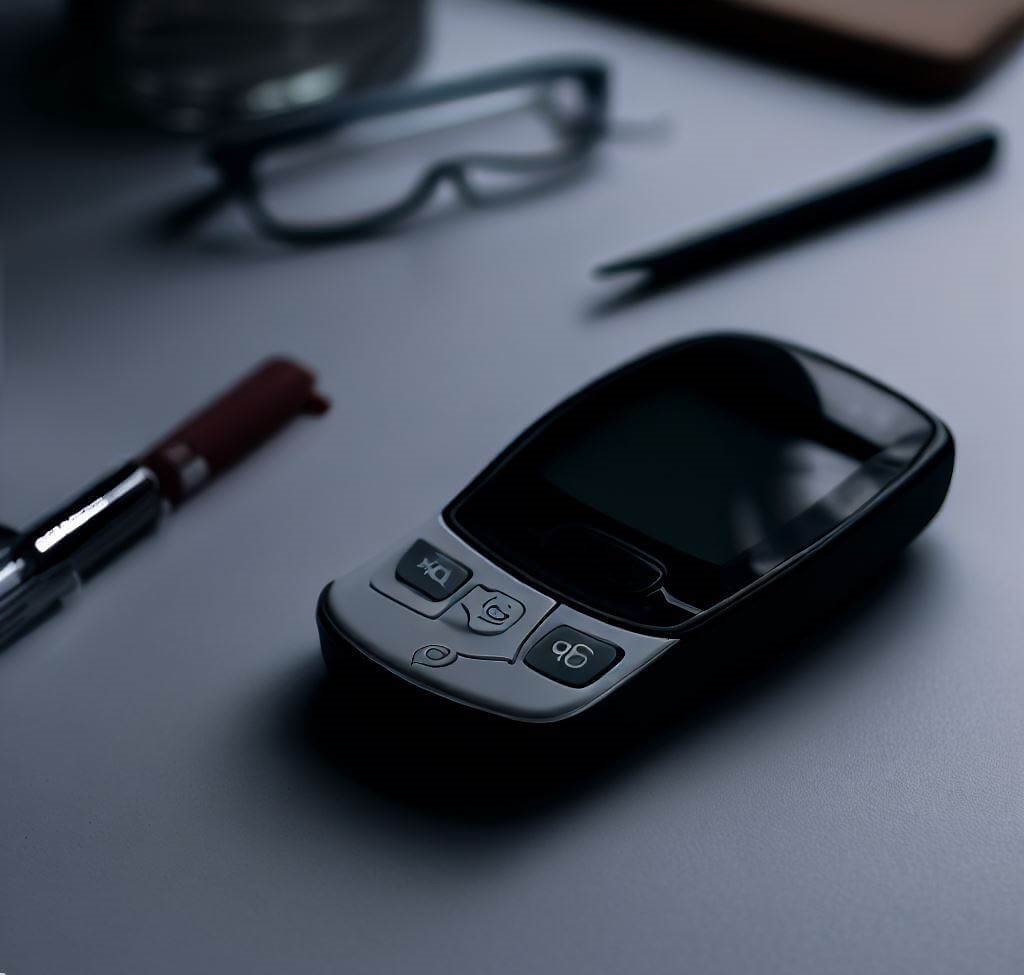Introduction
Diabetes is a chronic condition that affects millions of people worldwide, requiring daily management of blood sugar levels. For individuals with diabetes, navigating through workdays while keeping blood sugar levels in check can present unique challenges. This article aims to address these challenges and provide viable solutions to help manage diabetes at work effectively.
Understanding Diabetes
Diabetes is a metabolic disorder that results in high blood sugar levels. The body either doesn’t produce enough insulin or can’t effectively use the insulin it has. There are two primary types of diabetes: Type 1 and Type 2. Regardless of the type, managing diabetes requires daily attention to diet, physical activity, medication, and stress levels.
Challenges of Managing Diabetes at Work
Stress and Blood Sugar Levels
Stress is an integral part of many work environments. Deadlines, performance pressure, interpersonal conflicts, or job insecurity can elevate stress levels. Unfortunately, stress can cause blood sugar levels to spike, posing a challenge to diabetes management.
Meal Planning and Timing
Work routines often disrupt regular eating patterns. Missed meals, late lunches, or unhealthy food options at the workplace can make it harder for a person with diabetes to control their blood sugar levels.
Exercise and Physical Activity
Many jobs involve long periods of sitting or inactivity, which is not ideal for individuals with diabetes. Regular physical activity is crucial to managing blood sugar levels, and a sedentary job can pose significant challenges to this aspect of diabetes management.
Medication Management
Taking medications on time, especially insulin injections, can be challenging in a work setting. There might be a lack of privacy, or work schedules can conflict with medication timings.

Solutions for Managing Diabetes at Work
Navigating through these challenges might seem daunting, but with the right strategies and support, it is entirely feasible. Below are some solutions that can help in effectively managing diabetes while at work:
Handling Stress
Managing stress is critical for maintaining balanced blood sugar levels. Here are some effective stress management strategies:
- Mindfulness and meditation: Regular mindfulness practices, such as deep breathing or meditation, can reduce stress levels significantly.
- Breaks: Regular short breaks during the workday can help to recharge and reduce stress.
- Work-life balance: Striking a good work-life balance is essential. Ensure to allocate time for relaxation and activities that you enjoy.
Managing Meals at Work
Regular, balanced meals are critical for managing blood sugar levels. Here are some tips:
- Meal prep: Prepare meals at home that include a balance of proteins, carbs, and fats. Home-cooked meals allow for better control over ingredients and portion sizes.
- Snacks: Keep healthy snacks at your workstation. Nuts, seeds, and fruits are excellent snack options.
- Hydration: Drink plenty of water throughout the day to stay hydrated.
Integrating Physical Activity
Incorporate physical activity into your workday to help manage blood sugar levels:
- Regular movement: Try to stand and move around every 30 minutes. Use a standing desk if available.
- Exercise breaks: Use lunch breaks or other downtime for quick walks or stretches.
- Active commute: If possible, walk or bike to work. If you use public transportation, get off a stop or two early and walk the rest of the way.
Juggling Medication
Managing medication at work can be tricky but it’s essential for controlling diabetes:
- Medication reminders: Set reminders on your phone or computer for medication timings.
- Privacy: If you need to take injections, find a private place at work where you can do it comfortably.
- Communication: If comfortable, inform a close colleague about your condition. They can provide support if needed.

Rights of Diabetic Employees
Knowledge about your rights as an employee with diabetes is crucial:
- Legal protection: Laws such as the Americans with Disabilities Act (ADA) protect people with diabetes against discrimination in the workplace.
- Reasonable accommodations: You have the right to request reasonable accommodations at work, such as break times to eat, take medication, or test blood sugar levels.
Developing a Diabetes Management Plan
To ensure efficient diabetes management at work, it’s helpful to create a personal plan:
- Emergency plan: Inform a trusted coworker or manager about your diabetes and what to do in case of an emergency. Keep a supply of glucose tablets or gels on hand in case of low blood sugar. It’s essential to have an emergency plan in place. If you experience a sudden drop in your blood sugar levels at work, you should be ready to act swiftly. Sharing your condition with a trusted coworker or a manager can be crucial in such a scenario. Ensure they know about your condition and are aware of the steps they need to take if an emergency arises. For instance, they should know how to administer a glucagon injection if you’re unable to consume glucose in a low blood sugar situation. Always keep a supply of glucose tablets or gels on hand in case of hypoglycemia (low blood sugar levels). Choose a designated spot to store your supplies and let your coworker or manager know about it.
- Medical appointments: Schedule routine medical appointments and regular check-ups to monitor your condition.
- Regular medical appointments are a key part of managing your diabetes. These appointments give you an opportunity to review your blood glucose levels, discuss any concerns with your doctor, and make any necessary changes to your treatment plan. Try to schedule these appointments at a time that has the least impact on your work schedule. Early morning, late afternoon, or lunchtime appointments can be helpful. If such timings are not available, speak with your manager or HR department to negotiate time off for medical purposes.
- Self-monitoring: Keep a blood glucose meter at work for regular self-monitoring.
- Frequent self-monitoring of your blood glucose levels can give you insights into how your work environment and routine impact your diabetes. It can help you identify any patterns or triggers that cause fluctuation in your blood sugar levels, such as stress or missed meals.Keep a blood glucose meter at work and make it a habit to check your blood glucose levels regularly. This can guide you in making adjustments to your diet, physical activity, or medication throughout the day. Developing and adhering to your diabetes management plan can help you stay healthy and productive at work. However, remember that the plan should be flexible. As your routine or responsibilities at work change, you might need to adjust your plan accordingly. The goal of this plan is not only to manage your diabetes but also to make you feel supported and safe in your workplace. A well-thought-out plan can reduce anxiety related to managing diabetes at work and help you focus better on your professional responsibilities. Avoid skipping your self-monitoring routine even on busy days, as consistent monitoring can greatly assist in managing your diabetes effectively.

Employer Support and Communication
Clear communication with your employer can lead to better support and understanding:
- Disclose your condition: If you feel comfortable, disclose your condition to your employer. They may provide necessary accommodations to support you.
- Educate your colleagues: Creating an understanding workplace environment can foster support and empathy among colleagues. If comfortable, consider educating them about diabetes.
Conclusion
Managing diabetes in a work environment may present unique challenges, but with the right strategies and support, it can be well-controlled. It involves smart meal planning, regular physical activity, efficient stress management, and open communication with employers and colleagues. Understanding your rights as an employee with diabetes and having a personal diabetes management plan can also be incredibly helpful.
Remember, every individual’s experience with diabetes can be different. What works best for one person may not work as effectively for another. The key is to find what works best for you to maintain your health while also fulfilling your professional responsibilities.
FAQs
1. How can I handle the stress at work to manage my diabetes?
Mindfulness practices, regular breaks, and maintaining a work-life balance are effective ways to manage stress at work.
2. What kind of meals should I eat at work to control my diabetes?
Aim for regular, balanced meals that include a mix of proteins, carbs, and fats. Meal prep can be beneficial as it allows for control over ingredients and portion sizes.
3. How can I incorporate physical activity into my workday?
Try to move around every 30 minutes, use your lunch breaks for quick walks or stretches, and consider an active commute like walking or biking to work.
4. What rights do I have as an employee with diabetes?
Laws like the ADA protect people with diabetes against discrimination in the workplace. You also have the right to request reasonable accommodations, such as extra break times to eat or take medication.
5. How can I make my employer understand my needs as a person with diabetes?
Clear communication is key. Disclose your condition, if you feel comfortable, and discuss the accommodations you might need. You could also consider educating them and your colleagues about diabetes.
Your health and well-being should always come first. Remember, diabetes management is a journey, and you’re not alone. There are many resources and support systems available to help you along the way.





